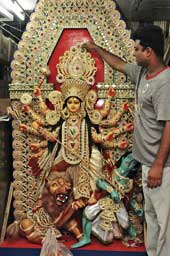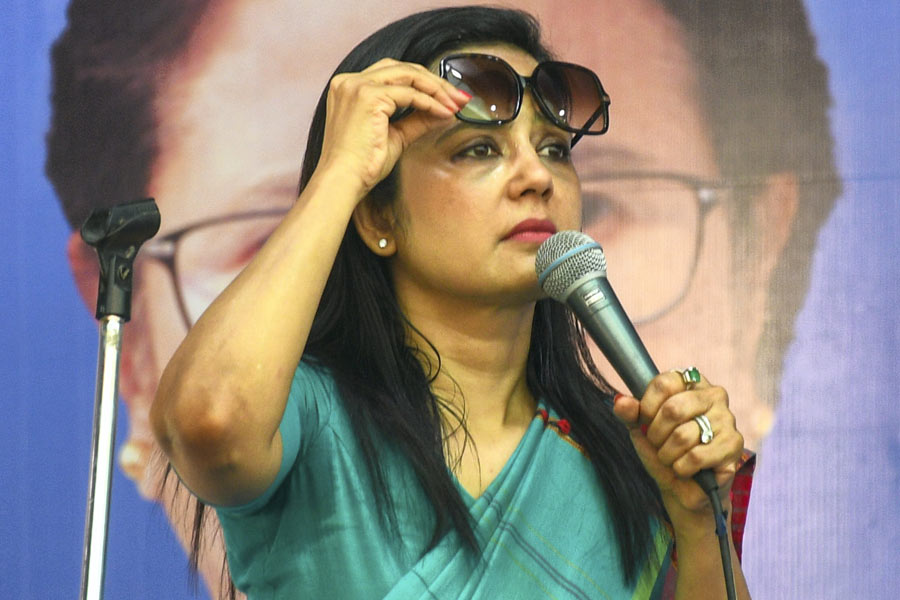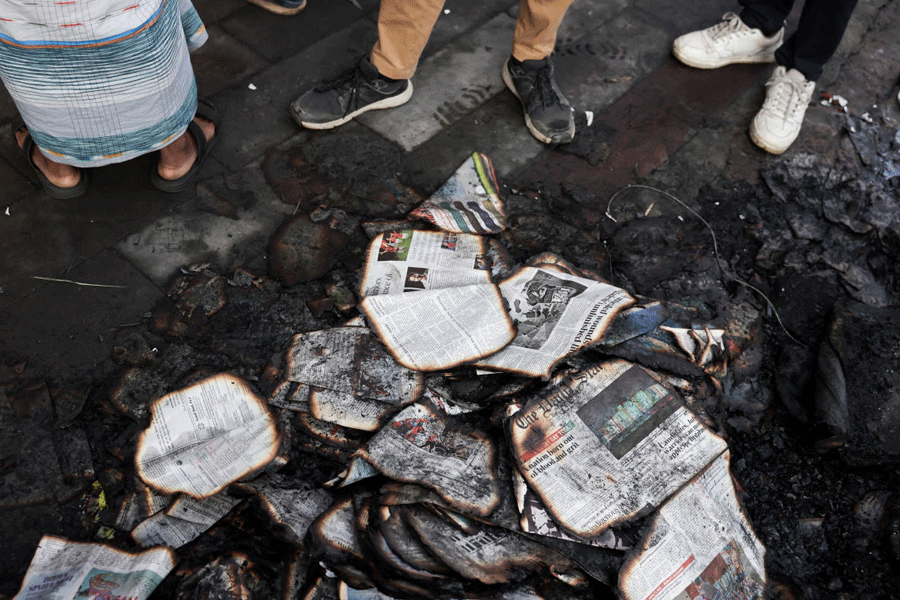 |
| A fibreglass Durga idol made at Kumartuli. Picture by Bishwarup Dutta |
Four years back, when the first fibreglass Durga idols from Kumartuli became a rage among NRI patrons, it was boom time for the artisans. Ironically, it’s the same fibreglass idols that are now giving Kumartuli artisans a tough time.
Fibreglass is a durable material and idols made from it last much longer than those made from clay or shola. As a result, repeat orders from abroad are drying up.
“Fibreglass idols are light and easy to transport. But they are also very long-lasting,” said Prodyut Paul, one of Kumartuli’s biggest idol exporters.
“Every artist covets orders from abroad. The pay is better and it’s also an acknowledgement that your work is good,” Nemai Pal, the president of Kumartuli Mritshilpa Sanskrity Samity, said.
Last year, Paul had made 12 idols for foreign clients. This year, he has sent only three — all to the US — and doesn’t have anymore offshore orders.
“We sent around 35 Durga idols abroad from Kumartuli last year. This year till now the number is 25,” said Nemai Chandra Pal.
“Fibreglass idols were sent abroad for the first time in 2004. It is only this year that we have felt the impact. Customers from abroad do not place orders every year, anyway. They usually preserve the idols. But while a clay or shola idol would last only five-six years, a fibreglass idol, if carefully handled, can be used for 15 to 20 years,” said Prodyut Paul.
Fibreglass idols are almost double the price of traditional ones. “But even the increased price is not enough to cover the gap in orders for so many years,” Paul said.
“Fibreglass idols are costlier because of the greater production cost. Fibreglass is more expensive than either clay or shola,” he added.
The labour cost is also more. Making a fibreglass idol is a three-stage process. First the clay model is prepared, then the plaster die-cast is made and finally the fibreglass is moulded. It’s also time-consuming. So, the difference in price does not make up for the lack of orders, Nemai Chandra Pal pointed out.
However, not all artisans are complaining. Kaushik Ghosh, whose father, Amar Nath Ghosh, has been exporting idols for many years, said: “Last year we sent 17-18 idols. This year too, the number is same. It makes no difference whether an idol is made of shola or fibreglass. Our customers keep coming back to us, and we are also getting new clients,” says Ghosh.
But Nemai Pal disagrees. “In the long run, artists will incur around 75 per cent loss because of the longevity of idols made from fibreglass. Unless you keep generating fresh orders, there is bound to be a slump in business. And it’s difficult to find as many fresh orders to cover the gap,” he insists.











